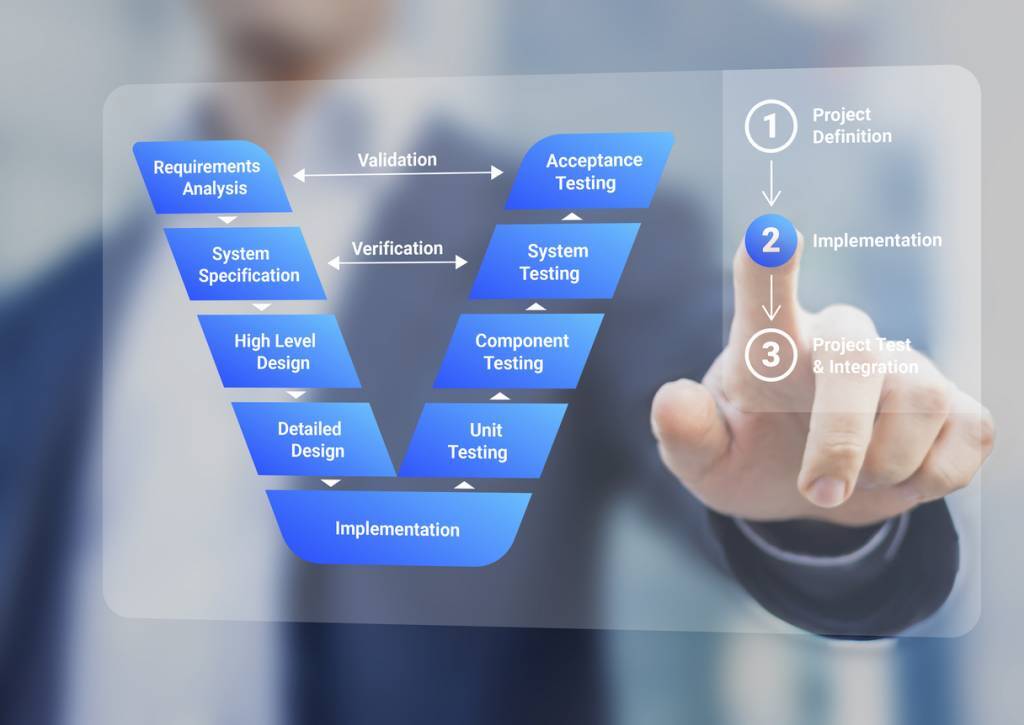How Neuroscience Can Help You Create Better Training Support
In today’s digital age of hyper-activity, our attention span is decreasing, resulting in a decrease in our availability and in our productivity....
Transform your IT projects with our comprehensive guide of advanced strategies and innovative tools for effective management.

IT project management is a process for SaaS companies to effectively implement all of their technology initiatives. It consists of planning, organization, coordination, and control of the resources and processes necessary to carry out a technological initiative. What are the fundamentals of IT project management? What are the key stages of IT project management and the tools and methodologies to use? In this guide, discover IT project management essentials, as well as the right attitudes to adopt for effective IT project management.
To successfully manage your IT project, you need to master these fundamentals, including responsibilities, planning, and risk management.
It is important to clearly define the roles and responsibilities of each member of your IT project team. You should define an IT project manager, developers, testers, analysts, architects and all other stakeholders.
Each actor should be well-informed about their specific responsibilities and their contribution to the success of the IT initiative. This allows you to avoid conflicts, confusions, and duplication of tasks. It also allows you to facilitate collaboration between all project stakeholders.
Defining specific, clear and achievable goals is an essential step in the management of IT projects. These objectives must be specific, measurable, attainable, achievable and time sensitive (SMART). Well-defined objectives are important in the execution of the IT project in the sense that they allow you to direct your actions.
It also allows you to regularly assess your progress in order to implement the necessary adjustments. In practice, you must clearly communicate these objectives to the entire project team in your company.

Without rigorous planning and organization of different aspects of an IT project, you compromise its success. This is why it is recommended to draw up a roadmap, a detailed plan of the various actions and activities to be carried out. This includes the execution phases, schedules and deadlines, available resources, expected results and deliverables.
Creating a Gantt chart allows you to visualize the timeline of tasks and aids in effective time management. By organizing the project execution, you can achieve a well-balanced distribution of activities and optimize resource allocation. This approach helps in avoiding overloads or bottlenecks, ensuring smoother project progress.
As a general rule, all projects carry inherent risks. However, you can overcome them by proactively identifying potential issues and devising suitable strategies to address them. To effectively manage your IT project, you have to identify potential risks associated with its implementation beforehand. This entails understanding their impact and probability to plan appropriate mitigation measures.
Effective risk prevention measures include:
To ensure the success of your enterprise IT projects, you must continually assess potential threats to their smooth execution. Consequently, mitigation strategies and methods should be adapted according to the evolving project circumstances. By being proactive in risk management, you increase the likelihood of successful project outcomes.
From needs analysis to project delivery, a company’s IT projects can be executed in six key phases.
The initial and critical phase of IT project management involves conducting a comprehensive analysis of needs and establishing a holistic project definition. This process is of utmost importance, as it helps to precisely define the project’s scope and set achievable goals. It entails collaborating with all stakeholders to clearly understand their expectations and establish specific project objectives. By conducting this thorough analysis and involving all relevant parties, you lay a strong foundation for the successful execution of the project.
Once you have analyzed the data and defined your IT project, the next step is to create a detailed execution plan. This plan should encompass the various project phases, expected deliverables, activity dependencies, required resources, and set deadlines.
Building a dashboard that consolidates all these aspects simplifies project monitoring. Additionally, it it’s vital to involve key members of the project team in the plan’s development to gain their insights and commitment. By creating a well-structured execution plan and actively engaging team members, you enhance the chances of successful IT project implementation.
The IT project plan consists of various activities that require allocated resources. It is important to assemble teams with the necessary skills to successfully execute each task. Equally important is providing these teams with the essential resources to enhance their productivity and task completion.
To ensure team efficiency, offer specific training as needed and foster effective collaboration among team members. Additionally, implement conflict resolution mechanisms and motivate team members to strengthen cohesion, productivity, and overall project success. By prioritizing these aspects, you create a conducive environment for achieving the project’s objectives and delivering successful outcomes.
Monitoring progress and managing deadlines are key actions when carrying out IT projects. They make it possible to ensure that the project is executed in accordance to deadlines. Use tools to monitor the project status and benefit from a global view in real time. It also allows you to quickly identify potential issues, make necessary adjustments, and minimize impacts on the overall schedule.

Quality control and risk management are important aspects of managing any IT project. You must put in place an effective quality control strategy to ensure deliverables meet standards and requirements. It involves the verification and validation of each task. It also requires regular testing, auditing, and risk management to minimize negative impacts on the project.
The final phase of IT project management is delivering results to stakeholders and closing activities. This phase is generally marked by a final evaluation of the project, the documentation of good practices and the production of a closing report. A closing meeting can be organized to collect feedback, lessons learned, etc. The delivery and closing phase is also the stage to thank everyone involved in the project.
There are many tools and methodologies you can leverage to optimize IT project management.
Depending on the needs of your IT project, there are a variety of different tools available. The best known are the Gantt chart, and dashboards. From one project to another, you can use management software such as Jira, Trello, Asana, Microsoft Project, and Basecamp. With these tools you can benefit from various functionalities for project planning, task tracking, online collaboration, etc.
There are different project management methodologies that you can leverage when carrying out your IT project. Choosing the appropriate method depends on your specific needs and expected results. The most widely used methodologies include:
Each of these methodologies has varying characteristics and advantages.
Select tools and methodologies adapted to your company
To achieve success in your IT initiative, it is essential to select the most suitable tools and methodologies based on your business requirements. This involves conducting a thorough assessment of the project’s characteristics, available resources, and the specific needs of your project team. Additionally, don’t hesitate to experiment with different methods and be open to adjusting your chosen methodology based on feedback and observations. By carefully tailoring your approach to the unique demands of the project, you can enhance the likelihood of a successful outcome.
Apart from the fundamental principles, key phases, tools and methodologies, here are some additional best practices to optimize IT project management :
It is important to learn from experiences and in order to continuously improve the management of your IT projects.

IT project management encounters several common challenges. First is addressing the management of deadlines and available resources. To tackle this, meticulously plan all aspects of your IT project execution.
Another challenge arises in managing stakeholder expectations. To overcome this, it is essential to have a clear understanding of their expectations, communicate transparently and realistically, and continuously manage expectations throughout the project.
Additional challenges in IT project management involve handling risks, technical issues, and changes in scope. These require proactive risk management strategies, effective problem-solving skills, and the ability to adapt and adjust the project plan as needed.
By acknowledging and addressing these common challenges, project managers can increase the likelihood of successful IT project execution.
Whether it’s a small or large SaaS company, IT project management is a complex process that demands significant stakeholder involvement. Rigorous planning, effective communication, proactive risk management, and adaptability to change are essential components in this context.
By adhering to the fundamental principles, key phases, and adoption of positive attitudes outlined, you can successfully execute your IT projects. Remember to tailor your approach to suit the unique requirements of each project, and leverage experiences. Through these efforts, you can navigate the complexities of IT project management and achieve successful outcomes.
In today’s digital age of hyper-activity, our attention span is decreasing, resulting in a decrease in our availability and in our productivity....
What is the role of a CIO? Discover the many facets of this position and its impact on the management and success of today's IT companies.
Discover the importance of digital transformation and its impact on today's businesses from the perspective of digital transformation expert...
Be the first to know about new B2B SaaS Marketing insights to build or refine your marketing function with the tools and knowledge of today’s industry.